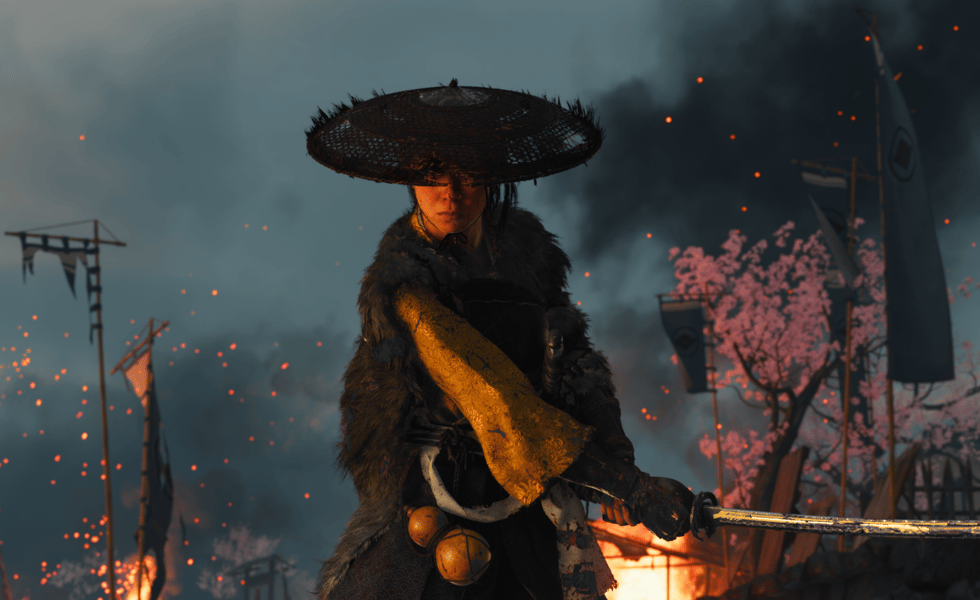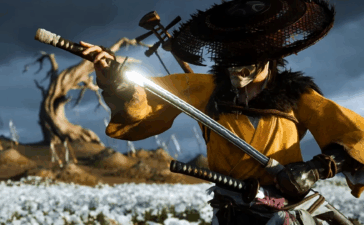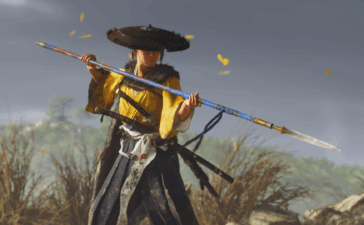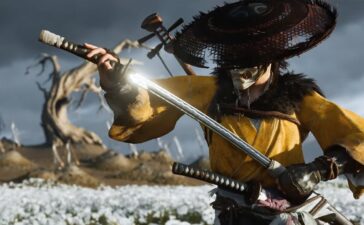Ghost of Yōtei is bloody, compelling, and an absolute joy, adding yet another serious game of the year contender to 2025’s long list of solid choices.
Reading the synopsis for Ghost of Yōtei felt like that one Squidward meme. “A lone wolf samurai embarks on a revenge plot to avenge her family? Daring today, aren’t we?” But somehow, the game managed to sway the snobby cynic in me, sinking me into its narrative within mere moments of starting it.
You play as Atsu, a lone-wandering warrior in her vengeful quest to eliminate all members of the Yōtei Six. After the menacing group murders your entire family and leaves you for dead against a burning tree, Atsu would, by some miracle, survive and disappear from Ezo. Now, as a trained warrior, she would return home, only to find the Yōtei Six spreading terror and disorder throughout the valley.
To come clean, I absolutely adored this game. There are so many boxes Ghost of Yotei ticks for me that make it a hard contender for game of the year in my eyes. While the story may have a fairly simple premise, developers Sucker Punch have managed to make it shine. This is, in part, due to the stellar cast of supporting characters paired with the game’s well-paced open world.
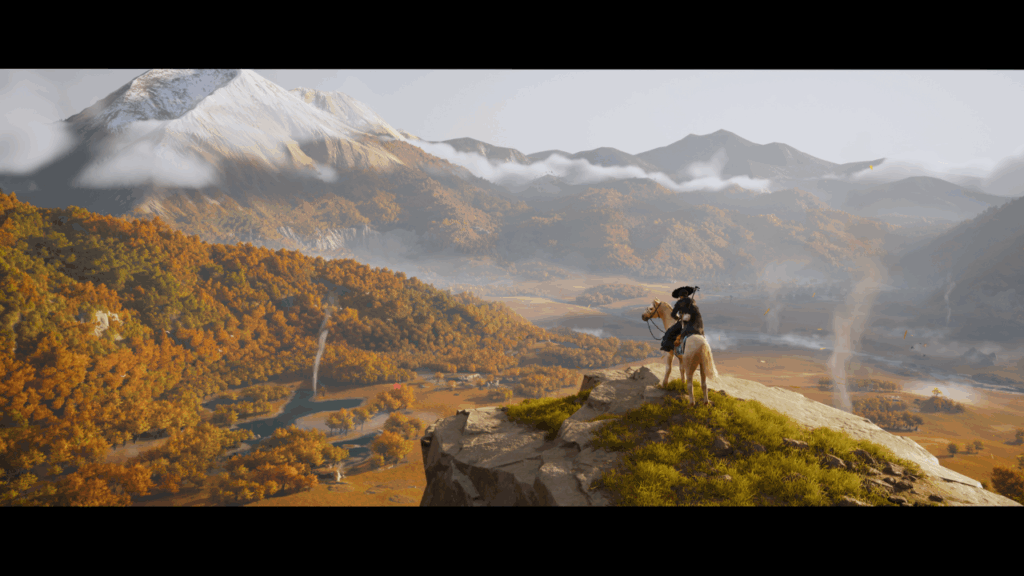
I never felt exhausted playing this game, which is impressive for an open-world game like this. Environments are filled with side quests and random encounters, but they are spread out and paced so well that completing them never felt like busy work.
When you start Ghost of Yotei, you’re given the freedom to tackle whichever member of the Yōtei Six you desire. With some context clues, I decided to face off against the Oni first, as I felt that was who the game was steering me towards.
In this route, you’ll unlock a wide variety of new weapons and tools, which flesh out the gameplay immensely. You’ll also encounter a character from Atsu’s past who will disagree with her quest. While a lesser game would draw this out and make weak arguments against Atsu’s quest, Ghost of Yotei goes all in, giving both arguments reasons to grow, while developing both characters’ viewpoints. It was genuinely engaging and impressive to play.
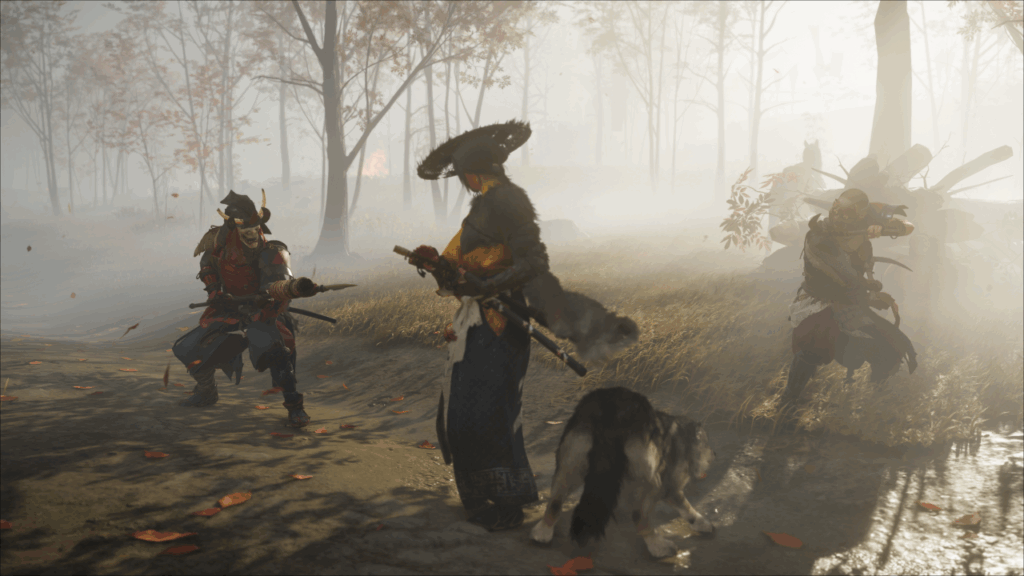
Atsu is also a respectable protagonist. Her character is defined by her unwavering resolve to avenge her family, and the tension that this causes with other characters feels earned. As you progress in the game, the people of Ezo feel the Yōtei Six’s grip tighten around them. This naturally puts Atsu at odds with characters who disagree with her scorched-earth vigilantism and the casualties that come with it. A lesser story would brush over this tension, or use it for a cheap dramatic moment; however, Ghost of Yōtei balances these viewpoints and gives Atsu room to reasonably argue against her foils in a way where you can see both sides to the argument.
Early in the game, Atsu gains the nickname Onryō, which is a ghost in Japanese folklore believed to return from death to enact revenge on the living. It’s a title that come with a lot of baggage. Atsu initially dismisses the title, using it as an advantage in her quest to frighten her opponents. But as the game progresses, and her allies also buy into the fable, it becomes clear that the title even scares her, reawakening the traumatic event from her childhood and leaving her unable to move on or recover.
Like any open-world game, Ghost of Yōtei can feel a little overwhelming at the start. You complete your first mission and are suddenly given three paths you can take. These branch out into different paths that ease you into the game’s recurring loop.
Thankfully, the game keeps everything tightly compacted, so you don’t find yourself running on wild goose chases. To compare this to Assassin’s Creed Shadows from earlier this year, you won’t find yourself spending half an hour running from point A to B just to get to your next mission.
The game’s stellar combat system also made completing side content all the more worth it in my eyes.
While journeying in Ezo, you’ll encounter different weapons masters who will take you under their wing to train. Each weapon you unlock introduces a fun element of “rock, paper, scissors” to combat, prompting you to switch between them fluidly during counter, whichever weapon your opponent is using in the moment.
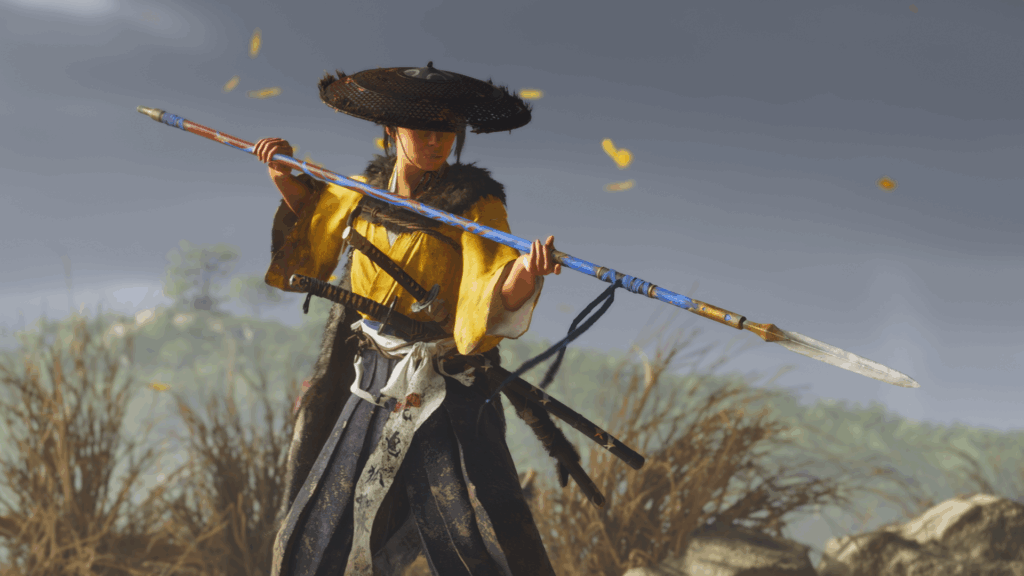
I loved that the game actually gave me a reason to use anything besides the katana, and built unique and interesting playstyles with each weapon.
You’ll also gain access to a variety of different tools to help out in battle, which you can weave in-battle to extend your combos.
Ghost of Yōtei also features stealth and assassination options for combat if that’s your jam. If not, you can also choose to have a stand-off with your enemies, launching into all-out combat instead (which was my preferred method).
Something I haven’t mentioned just yet, but absolutely deserves its own praise, is how well the game runs.
Unlike most triple-A games out there right now, Ghost of Yōtei ran perfectly right off the bat. I played the game on a PS5 Pro, initially starting on the default settings. This meant that the game ran at a stable 30 frames per second in combat and cutscenes. In truth (and to sound like a grubby graphics schlub), it didn’t look ideal to my eye. The game was still gorgeous to look at, but something felt off.
It wasn’t until I decided to try out the game’s different cinematic modes that I spotted the setting ‘PS5 Pro’s Performance Mode’, unlocking 60 frames. I have to tell you, switching to this mode felt like Rock Lee from Naruto taking off the training weights. At that point, the game opened up significantly, and it truly felt night and day. I was experiencing less eye strain while playing, and combat felt fairer because I could react to more frames in the enemies’ animations.
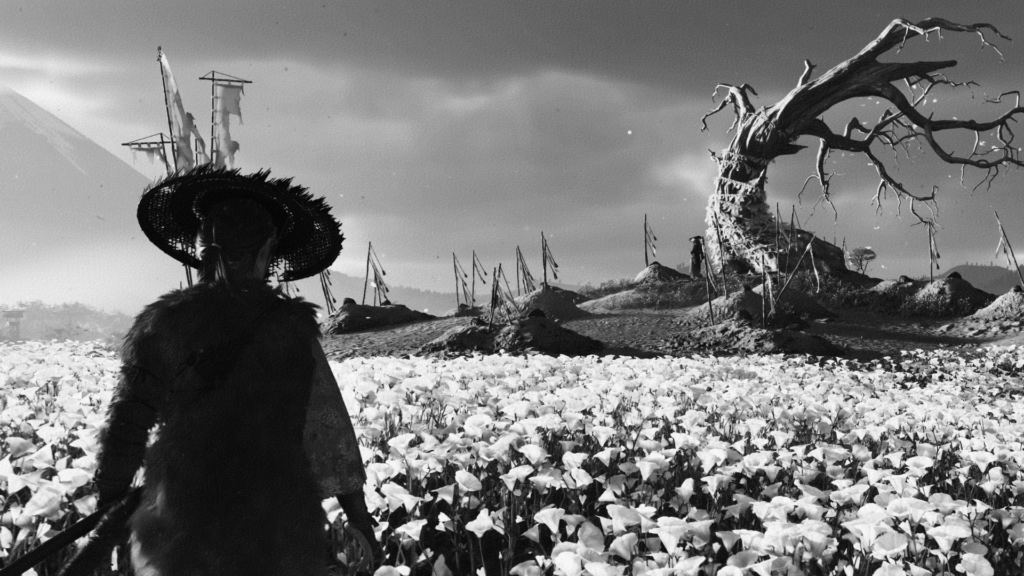
What is all the more impressive is that this didn’t have any impact on the game’s overall performance, despite cranking the game to its maximum settings. In fact, I rarely encountered any bugs in the game. The only ones I experienced were minor visual hiccups here or there.
I don’t know what dark magic Sucker Punch has access to, but load times were also non-existent. I would turn off my console the night before, turn my PS5 Pro on the next evening and immediately load into the game. It had felt like I just paused my game, walked away and pressed play. This is all the more impressive as again, it made the open world far less daunting to explore.
At one point, I had accidentally climbed down a mountain without praying at the altar at the top. Instead of having to make the long climb again, I was able to instantly transport to the top of the mountain and complete that last objective without wasting my night making up for that mistake.
All in all, Ghost of Yōtei continues to prove that Sony’s exclusive game studios are cooking this generation. Sucker Punch has developed a game that really showcases the PS5 Pro at its best, highlighting how the console can seamlessly run what should be a demanding game. Year on year, PlayStation’s exclusive titles continue to blow their competition out of the water, and Ghost of Yōtei continues the PS5’s home run this console generation.
I know I’ve glazed this game more than a Christmas ham at this point, but in my eyes, Ghost of Yōtei may just be one of the best Action-RPGs released in years, and will go down as one of the most iconic titles for this generation of gaming.
Rating: 5/5 stars.
Ghost of Yōtei releases on PlayStation 5 on October 2nd.


